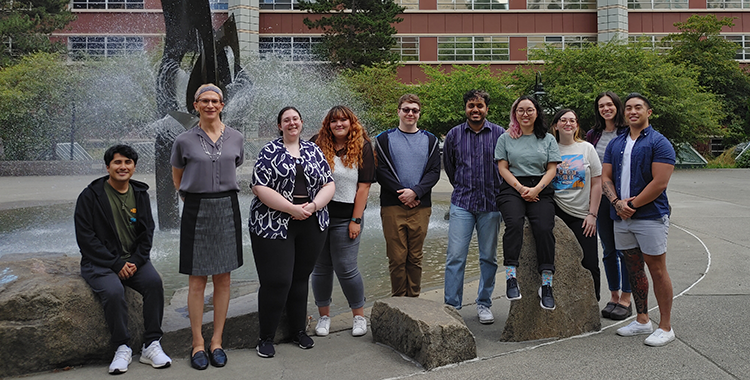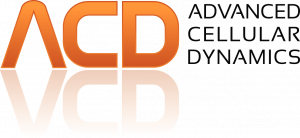How does SciNote fit into your workdays, and where is it the most helpful?
It’s the security of recording things on the cloud and having my ability to evaluate any of that information, any of those experiments at any time from anywhere, and not having to say “can I see your notebook.”
Can you tell us a bit about your work?
Deborah: We are a contract research organization. We bring in clients from all over the world, though most of them right now are in the US. We are basically scientists for hire – so we have certain specializations, but really we work on a variety of different projects and disciplines and scientific endeavors. They range from basic immunology, to rather hard-core molecular biology, to making recombinant bacterial strains – and everything and anything in between.
Every new client comes with some new challenges, and new research areas in which we have to develop an expertise. With that comes all kinds of curiosity about the science, about the biology of the systems – and that just makes it fun.
Read more about ACD’s work and get their tips for a future-ready biotech business in our blog post.
How did you decide to start using an electronic lab notebook? What were the challenges you were facing before implementing an ELN?
Deborah: I wanted to evolve into something that was beyond paper notebooks. Written documentation, from my experience, has always failed in adequately documenting experiments – because humans are humans, and they tend not to document what they are doing when they are busy. So, things end up on paper towels, post-its, sheets of paper that get shoved into notebooks. For years, I pushed and said you don’t need a fancy notebook. If you can write it on the post-it or paper towel, you can write it in the notebook. Just document. And it still doesn’t work.
I take notebooks seriously. I have paper notebooks going all the way when we started in April 2007. I have an entire bookshelf full of these notebooks. There are some 40 notebooks. I do still go back to them on occasion and find things that we need, but I have to be here and have to be in my office if I want to do that. No longer was that necessary with SciNote because SciNote makes it so much better; it consolidates everything and ties everything together.
Written documentation, from my experience, has always failed in adequately documenting experiments – because humans are humans, and they tend to not document what they are doing when they are busy.
What were the main reasons you chose SciNote?
Shyam: SciNote was not what we started with. When I joined the company, we were using another electronic lab notebook solution. At some point, their updates were causing more problems than they were solving. We started almost building our own system, until I began to look at alternatives in the ELN space. I remember looking at several comparisons and trying demos where I could. SciNote just seemed to have most of the features we had wanted to integrate with, and other tools we were considering building – things like being able to load protocols and follow along with the steps.
In addition to that, with SciNote, we can link inventory items and experiments, and have a more structured layout for the notebook rather than a bunch of folders and pages. SciNote just seems like the best way to move toward where we are trying to go, more streamlined and efficient.
Deborah: Some of the other notebook providers didn’t make it as easy for us to do one thing that’s really critical, which is to keep different notebooks for different clients segregated and self-contained. Notebooks that we know could stand alone on their own, and allow us to keep a dedicated space for each of our clients – particularly if we want to give them the opportunity to audit the work. This is really important to us.
Some of the other notebook providers didn’t make it as easy for us to do one thing that’s really critical, which is to keep different notebooks for different clients segregated and self-contained.
What does implementation look like in your lab? Did you face any challenges?
Shyam: I think overall, the user interface and just navigating everything in SciNote is pretty straightforward. Most people pick up on that very quickly. The hard part that took us longer was trying to figure out the best structure for projects and experiments and tasks, and making sure everyone is on the same page, so everyone is using SciNote in the same way. Otherwise, you could end up using it in a lot of different ways, and it becomes difficult to switch between different people and experiments.
Deborah: The goal is to make documenting experiments so simple that it does happen in real time. And so among those efforts are getting a good electronic lab notebook system integrated in our operations. It was equipping with all of our associates with tablet computers, and they are encouraged to use that as they are doing experiments to get their information into their electronic lab notebooks.
The goal is to make documenting experiments so simple that it does happen in real time.
How does SciNote fit into your workdays, and where is it the most helpful?
Deborah: For my perspective, the thing that I find most useful is that there is a very clean and very logical interface that can be used in a variety of different ways, so you can tailor it to your needs.
It’s the security of recording things on the cloud and having my ability to evaluate any of that information, any of those experiments at any time from anywhere, not having to say “can I see your notebook.” I can go into SciNote and I can look up the experiment that I am interested in, and I can get the information most of the time.
Shyam: And in terms of actual entry, the best way to get people to be consistent is to make it as easy as possible, and that will go a long way. I know I have made pretty good uses of being able to copy a whole workflow and just put it somewhere else, or to import protocols directly into an experiment. So for doing very similar experiments, it is not a lot of work to set up the entire workflow again. Just make a few edits, and you are ready to go.
Also, the API that SciNote provides helped us integrate SciNote with other data platforms, such as our “supply requests” system in SharePoint. We can also come up with a workaround of something that has been bothering us and that hasn’t made it onto the SciNote roadmap yet.
It’s the security of recording things on the cloud and having my ability to evaluate any of that information, any of those experiments at any time from anywhere, and not having to say “can I see your notebook.”
What is your experience with the SciNote team?
Deborah: It’s been truly pleasurable working with all the support for SciNote. They clearly understand their product and are proud of their product, and want to make sure the users get the most out of it. And they’ve helped us in numerable times along the way to extract the most out of SciNote for our needs. That wasn’t true for other providers.
Shyam: Overall, my impression has been great in terms of feature requests and bug reports. It’s pretty quick to get a response and get an idea if and when things will be implemented. The team also helped enable the SciNote integration with our Fluics label printer within a day, which made the set up very easy.
[The SciNote Customer Support Team] clearly understand their product and are proud of their product, and want to make sure the users get the most out of it.
Would you recommend SciNote to other scientists, and why?
Deborah: We were very impressed with SciNote. We started sharing some of the SciNote features with one of our clients, and that client now also uses SciNote. We don’t only just say the words, we walk and talk what we preach.
There are many other reasons I would recommend SciNote. Number one, it will be a lot more trees left on the planet if everyone goes electronic. It removes the risks of losing a lifetime’s research, at least the documentation of that research – if you have a flood, a fire, or other nature disasters, all that paper and those written records are gone forever. With SciNote, it is all neatly tucked away in the cloud; you can pull it up at any time and, knock on wood, it is safe forever – and that’s important.
Shyam: I would also recommend it, just from direct usage comparison from our previous lab notebook to SciNote, just easier to use. At least for me, that’s the best way to be consistent about doing something.
We were very impressed with SciNote. We started sharing some of the SciNote features with one of our clients, and that client now also uses SciNote.
Do you have any tips for those who are considering SciNote?
Deborah: It’s really important that any electronic lab notebook users understand that it is not going to work perfectly the way you want it on day one. You have to start using it, and then come to grips with how it is doing in terms of gathering the information in a presentable and logical way. And then you can tweak it as it goes along so that it starts to empower you rather than enslave you. And that takes time. It doesn’t happen overnight. It’s many iterations. We have been through those iterations now.
Shyam: I think the biggest thing that made our structuring click (and it might have been a SciNote support representative who suggested this) was to focus on making each task within an experiment something that we can complete in one day. Once we started organizing a few things like that, we ended up restructuring things, so everything is organized around that idea. We then built the structure up from there, and finally got somewhere where we feel like everyone is on the same page. There are of course exceptions, but it is a very nice way to conceptualize it.
I think the biggest thing that made our structuring click was to focus on making each task within an experiment something that you can complete in one day.
This testimonial was prepared based on a video interview with Deborah Schwarz and Shyam Ajudia from the Seattle-based Advanced Cellular Dynamics. They were invited to share their experience using SciNote due to their use case and familiarity with the product; the company received additional SciNote features for their participation.
Join Deborah and Shyam and 90K+ scientists from around the world.
Get your quote and start using SciNote.




